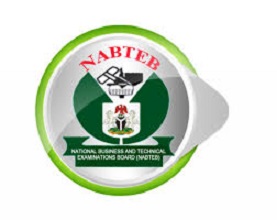NABTEB 2021 GEOGRAPHY VERIFIED ANSWERS
(2a)
A solar system is a group of planets, meteors, or other objects that orbit a large star.
(2b)
(i) Mercury
(ii) Venus
(iii) Earth
(iv) Mars
(2c)
(i) Mercury:
– It has a solid surface that is covered with craters like our Moon.
– It has a thin atmosphere, and it doesn’t have any moons.
(ii) Venus :
– Venus’ crust is mostly basalt, and is estimated to be 6 to 12 miles (10 to 20 km) thick, on average.
– its dense atmosphere traps heat in a runaway version of the greenhouse effect that warms Earth.
(3a)
Draw the diagram below
(3b)
(i) Revolution of the earth brings about change is seasonal temperature
(ii) revolution of the Earth causes summer to become winter.
(iii) the revolution of the Earth causes our daily weather and global climate by affecting wind direction, temperature, ocean currents and precipitation.
(3c)
(i) Because the sun is always directly overhead at the equator
(ii) Because the equator is very close to the sun
(5a)
Environmental conservation is the protection, preservation, management, or restoration of natural environments and the ecological communities that inhabit them.
(5b)
[Pick any four]
(i) Water
(ii) Air
(iii) Coal
(iv) Oil
(v) Natural gas
(vi) Phosphorus
(vii) Bauxite
(viii) Copper
(5c)
(i) Product Life Extension:
This is a method by which the durability of the product is extended by deliberate design, so that the need for replacement would be postponed.
(ii) Recycling:
Recycling is a popular and widely practiced method throughout the world by many industrial units.
(iii) Optimum Recycling:
The optimum level of recycling is the point at which the extra cost of recycling does not outweigh the extra benefits.
(iv) Waste Reduction:
The problem relating to conservation of resources exhibit in two ways, one to consume or exploit the resources in a minimal way and the other is to avoid or reduce wastage in the process of production.
(v) Material Substitution:
There are many possibilities of material substitution by which, the use of a material resource can be restricted by finding an alternative resource.
PART II
(6a)
A geographic information system (GIS) is a computer system for capturing, storing, checking, and displaying data related to positions on Earth’s surface.
(6b)
[pick any four]
(i) Hardware
(ii) Software
(iii) Data
(iv) Space Segment
(v) Control Segment
(vi) User Segment
(6c)
(i) Hard ware :
Hardware is the computer on which a GIS operates. Today, GIS runs on a wide range of hardware types, from centralized computer servers to desktop computers used in standalone or networked configurations.
(ii) Software :
software provides the functions and tools needed to store, analyze, and display geographic information.
(iii) Data:
this is the most important component of a GIS is the data. Geographic data and related tabular data can be collected in-house or bought from a commercial data provider
(iv) The space segment:
This consists of a nominal constellation of 24 operating satellites that transmit one-way signals that give the current GPS satellite position and time.
(v) Control Segment :
the control segment consists of worldwide monitor and control stations that maintain the satellites in their proper orbits through occasional command maneuvers, and adjust the satellite clocks.
(vi) User Segment:
The user segment consists of the GPS receiver equipment, which receives the signals from the GPS satellites and uses the transmitted information to calculate the user’s three-dimensional position and time.
7a)
Remote sensing is the process of detecting and monitoring the physical characteristics of an area by measuring its reflected and emitted radiation at a distance (typically from satellite or aircraft).
(7b)
– A geographic information system (GIS) is a computer-based tool for mapping and analyzing feature events on earth.
While
– Remote sensing is the art and science of making measurements of the earth using sensors on airplanes or satellites.
(7c)
(i) Analyzing the condition of rural roads.
(ii) Creating a base map for visual reference.
(iii) Computing snow pack.
(iv) Collecting earth’s pictures from space
(4a)
(i) A – Tropical Moist Climates (average temperature above 18oC in all months)
(ii) B – Dry Climates (deficient precipitation for most of the year)
(iii) C – Moist Mid-Latitude Climates with Mild Winters
(iv) D – Moist Mid-Latitude Climates with Cold Winters
(v) E – Polar Climates (extremely cold summers and winters)
(4b)
Loading
i) A – Tropical Moist Climates (average temperature above 18oC in all months)
(ii) B – Dry Climates (deficient precipitation for most of the year)
(iii) C – Moist Mid-Latitude Climates with Mild Winters
(iv) D – Moist Mid-Latitude Climates with Cold Winters
(v) E – Polar Climates (extremely cold summers and winters)
(4b)
(i) A semi-arid climate
(ii) The arid or desert areas
(4c)
(i) A semi-arid climate, semi-desert climate, or steppe climate is the climate of a region that receives precipitation below potential evapotranspiration, but not as low as a desert climate.
(ii) Deserts (arid lands/drylands) constitute about 35% of the land areas of the world and are typically characterized by rainfall scarcity, higher temperatures and evapotranspiration, lower humidity, and a general paucity of vegetation cover.
